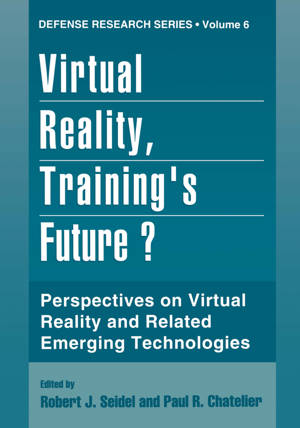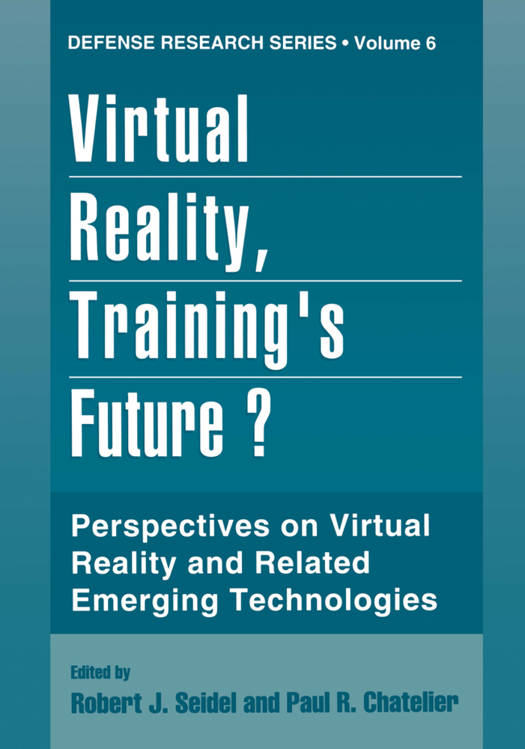
- Afhalen na 1 uur in een winkel met voorraad
- Gratis thuislevering in België vanaf € 30
- Ruim aanbod met 7 miljoen producten
- Afhalen na 1 uur in een winkel met voorraad
- Gratis thuislevering in België vanaf € 30
- Ruim aanbod met 7 miljoen producten
Zoeken
Virtual Reality, Training's Future?
Perspectives on Virtual Reality and Related Emerging Technologies
€ 259,45
+ 518 punten
Omschrijving
In 1988, the NATO panel governing human sciences (Panel 8 on Defence Applica- of Human and Bio-Medical Sciences) established a Research Study Group to synthe- tions size information relevant to Advanced Technologies Applied to Training Design. During its first phase, the RSG established an active exchange of information on advanced tech- nologies applied to training design and stimulated much military application of these tech- nologies. With the increased emphasis on training throughout the alliance, Panel 8, during its April 1991 meeting decided to continue with Phase II of this RSG focusing in the area of advanced training technologies that were emerging within the alliance. In order to ac- complish its mission, the RSG held a series of workshops. Leaders in technology and training were brought together and exchanged information on the latest developments in technologies applicable to training and education. This volume represents the last in a se- ries based on the NATO workshops. In Part One, it details findings from the last work- shop, Virtual Reality for Training; and in Part Two, we provide a summary perspective on Virtual Reality and the other emerging technologies previously studied. These include computer-based training, expert systems, authoring systems, cost-effectiveness, and dis- tance learning. It is a natural extension to proceed from learning without boundaries to virtual envi- ronments. From the extended classroom to the individual or team immersion in a distrib- uted, virtual, and collaborative environment is an easy conceptual step.
Specificaties
Betrokkenen
- Uitgeverij:
Inhoud
- Aantal bladzijden:
- 222
- Taal:
- Engels
- Reeks:
- Reeksnummer:
- nr. 6
Eigenschappen
- Productcode (EAN):
- 9781489900401
- Verschijningsdatum:
- 30/05/2013
- Uitvoering:
- Paperback
- Formaat:
- Trade paperback (VS)
- Afmetingen:
- 178 mm x 254 mm
- Gewicht:
- 417 g

Alleen bij Standaard Boekhandel
+ 518 punten op je klantenkaart van Standaard Boekhandel
Beoordelingen
We publiceren alleen reviews die voldoen aan de voorwaarden voor reviews. Bekijk onze voorwaarden voor reviews.










